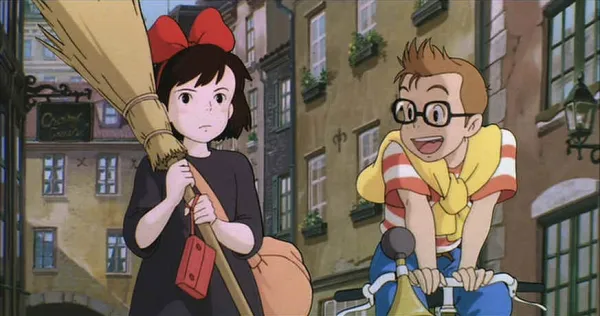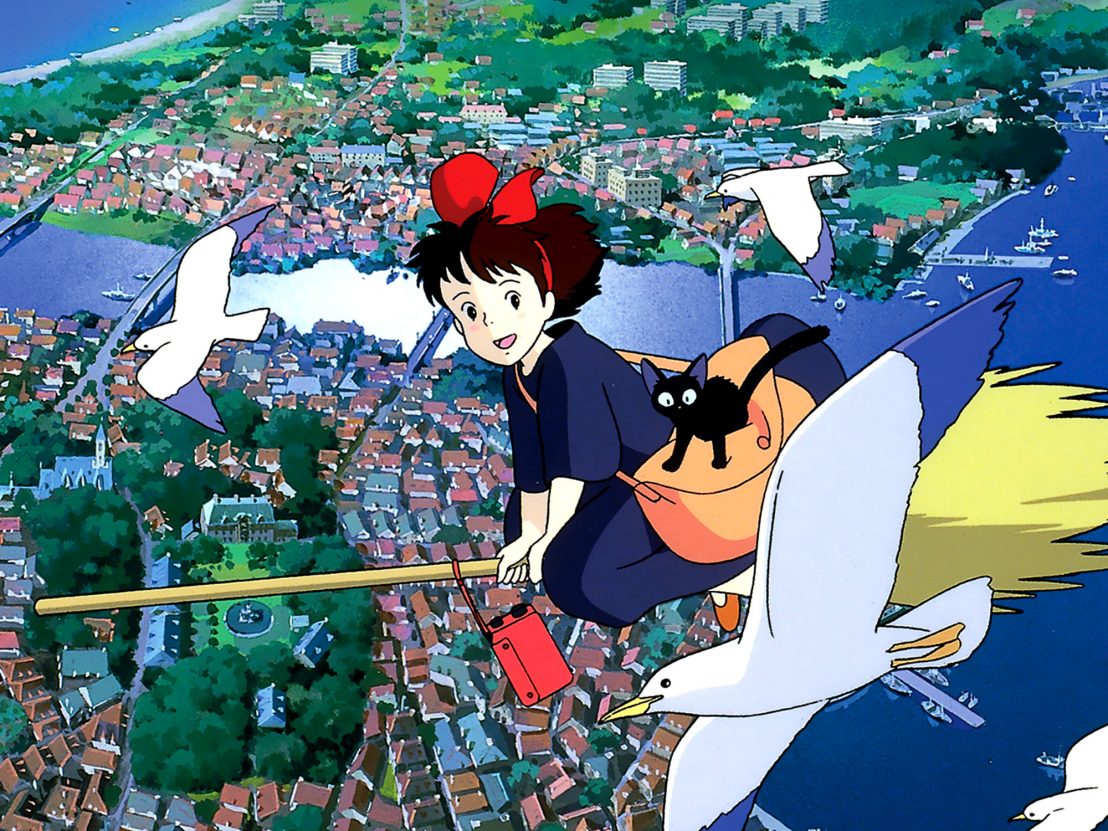By Maria Papagiannopoulou,
Kiki’s Delivery Service is a 1989 animated fantasy film written, directed and produced by Hayao Miyazaki. It was animated by Tokuma Shoten, Yamato Transport, and Nippon Television Network by Studio Ghibli and distributed by Toei. The movie’s theme song was sung by Yumi Arai.
The movie is based on Eiko Kadono’s children’s novel of the same name. However, the film deviated from the story and themes of the original novel, angering Kadono during production. She then made peace with Miyazaki. A more faithful live-action film version, narrated by Kadono, was released on March 1, 2014.
The film began production on April 1, 1988, and was released in Japan on July 29, 1989, winning the Animage Anime Grand Prix. It was the first film released under a 15-year distribution partnership between The Walt Disney Company and Studio Ghibli. Buena Vista Home Video recorded its 1997 English dub and premiered in US theatres at the Seattle International Film Festival on May 23, 1998. The film was released on home video in the United States and Canada on September 15, 1998.
The big theme of this movie is “maturity”. After leaving her parents to support her independence, Kiki must contend with common adolescent problems such as finding a job, seeking recognition, and taking care of herself. must be the concept of vulnerability is also explored in detail in the film. Critic Mark Schilling notes a scene during Kiki’s first night out, in which Kiki rushes back to her room to avoid being spotted by Fukuo and slams the door behind her. However, Fukuo has only stepped forward to extend his arm, and Kiki’s strangely shy demeanour “expresses youth, vulnerability and loneliness.”
Another theme is the transition from tradition to modernity. Kiki has been shown to balance these two traits. For example, Kiki adheres to the tradition that witches dress in black but adorns her hair with bright red ribbons. Kiki also dabbles in other traditional methods, such as baking bread in a wood-burning oven and flying on her mother’s old broom.
Kiki’s loss of her witch powers is considered the worst crisis she must face during the film. Her loss of flight reflects the harm dealt to Kiki by her own self-doubts. This hardship causes Kiki to realize that being vulnerable does not always lead to failure and can help her learn valuable lessons to better understand herself. Jiji had served as the wiser voice to Kiki, and she stopped being able to understand him the moment she struggles with self-doubt. At the end of the film when Kiki overcomes her personal challenges, she is still unable to understand Jiji, signifying her newfound maturity and wisdom.

In relation to Kiki’s portrayal as a witch, some have drawn comparisons to historical or contemporary views on witches and witchcraft. The film incorporates some conventions from fairy tales such as a black cat companion for Kiki, Kiki’s use of a broom for flight, and her black dress. While girls with magical powers are common in Japanese television Miyazaki noted that, “the witchcraft has always merely been the means to fulfil the dreams of young girls. They have always become idols with no difficulties.” In contrast, Kiki cannot use her powers as a means of wish fulfilment.
Kiki has also been compared to other characters in Miyazaki’s films. While there are overt differences in demeanour between Kiki and San from Princess Mononoke, a character who is motivated by anger, both characters take control over their own lives.
Kiki’s story is more than just a journey of self-discovery. This is the story of how firmly rooted traditions in rural areas are destined to disappear as young people migrate to cities and assimilate fragments of the old to build new ones.
Despite having little action, the quiet, slow-paced tale will keep little ones (and adults) completely engrossed. We’ve all experienced the fear of leaving our homes, adapting to new and terrifying surroundings, evolving and losing a part of ourselves in the process.




